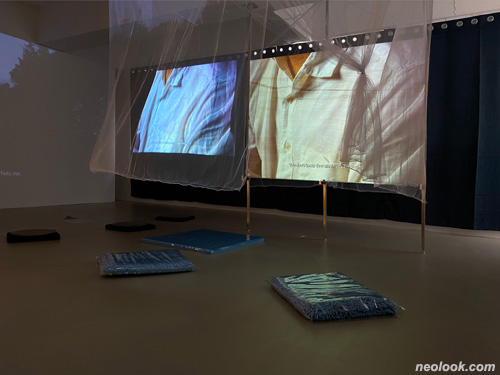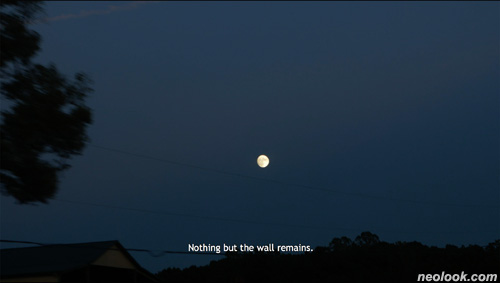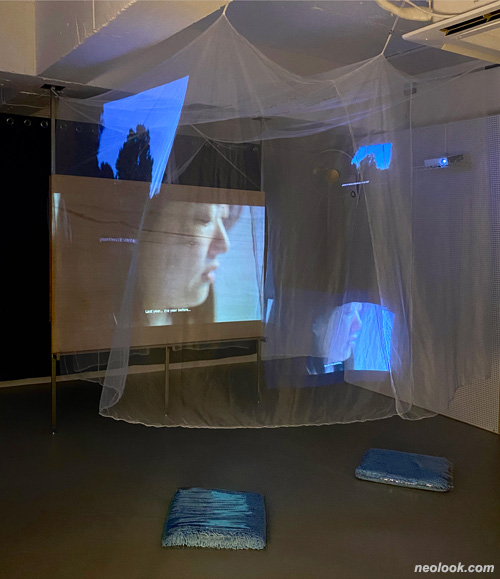- ● homepage
- ● archives
- ● restoration
- ● books
- ● big banners
- ● post board
- ■ neo's search
- ■ about us
- ■ 게재방법 안내
- 개인정보처리방침

- [email protected]
- Tel. 02_335_7922
- Fax. 02_335_7929
- 10:00am~04:30pm
- 월요일~금요일
- 3/3(월) 대체공휴일

환영하는 경계 Phantom Border
김한결展 / Cecilia Kim / video.installation 2020_0919 ▶ 2020_1002 / 월요일 휴관

- 김한결_환영하는 경계 Phantom Border展_0 갤러리_2020
전시 속 대화 / 2020_0926_토요일_05:00pm
"일상에서 어떤 형태의 경계를 마주합니까?" 발제자 / 김한결 주관 / 0 갤러리
관람시간 / 04:00pm~09:00pm / 주말_02:00pm~07:00pm / 월요일 휴관
0 갤러리 0 Gallery 서울 서초구 방배로13길 70 201호 000gallery.com
경계를 타고 미끄러지는 것들 ● 너와 나 사이 어딘가에 위치하는 언어들과 / 만질 수 없는 기억과 나의 Void 사이에 놓여있는 Border / Border 를 타고 흐르지만 때론 침투되며 넘나들기를 바라는, / 감각되지만 만질 수 없는 Phantom Border

- 김한결_모래성_영상_00:01:46_2019
작가 김한결은 '김한결'인 동시에 'Cecilia KIM'이다. 나(글쓴이)는 그녀의 전시 첫 머리에 소개될 이 글에서 한 "언어1)"의 이름보다는 '작가' 또는 '그녀2)'로 대신하여 지칭하고자 한다. 이런 고민과 행동이 유난스러워 보일지라도, 그녀가 이번 전시에서 집중하고 있는 부분을 염두에 두고 본다면, 이는 중요한 고민이다.

- 김한결_따뜻하고 온전한 주황색_영상_00:06:18_2019
이번 전시 『환영하는 경계, Phantom Border』에서 그녀는 "As a female Asian artist-filmmaker3)" 로서 경험하고 있는 주제들 중 특히 "언어"의 한계와 보이지 않는 "경계"에 대해 이야기한다. 어쩌면 누군가는 이 주제가 하나 이상의 나라에 거주하며 다양한 문화를 경험한 그녀에게 당연한 것으로 치부할지도 모른다. 그러나 오히려 '외국에 살면 다 그렇지' 라고 생각하는 순간 우리는 오히려 그녀가 의도하지 않은 함정에 빠지고 만다. 왜냐하면 사실 '같은 언어'를 쓰고 '같은 문화' 속에 있다는 그 착각이야말로 우리를 보다 더 언어의 한계에 가두고 "언어"들 사이로 미끄러지고 있는 것들을 놓치게 만들기 때문이다. 이번 전시에서는 바로 이 "언어"로, "형식"으로 그리고 "기억"과 "시간"으로 잡히지 않는 것들이 공간을 메우고 경계 사이를 넘나들며 우리를 기다린다.

- 김한결_노동 퍼포먼스_영상_00:25:00_2020
전시장 속에서 "경계-Border"들은 "환영-Phantom"적인 모습으로 우리를 "환영-Welcome"하고 있다. 빨려 들어가는 영상 속에서, 누군가의 목소리 속에서, 소리없는 자막 속에서 '경계-Border'들은 보이지 않는 '환영-Phantom'으로 존재한다. 동시에 그것들은 공간 속에서 모기장과 같이 안과 밖을 나누며 투시되는 장막이 되어 우리를 '초대-Welcome'한다. 중요한 것은 그녀가 경계를 세우는 것이 아니라 초대하고 있다는 사실이다. 그녀의 표현을 빌리면, 오히려 그것들은 서로를 넘나들며 침투(Osmosis4))한다. ■ 김가원
* 각주 1) 한글 또는 영어 고유의 맥락을 유지하기 위해 두 언어를 병행한다. 2) '그녀'라는 지칭은 작가가 자신을 소개하는 글에서 'As a female' 이라고 한 부분에서 차용했다. 3) 작가의 소개글에서 직접 인용하였다. 그녀가 인터뷰에서 언급한 중요 어휘는 직접인용("")으로 표기한다. 4) 생물학적 어휘로 '삼투현상'을 말한다. 예) 삼투압에 의해 식물의 뿌리가 토양의 물을 흡수한다.

- 김한결_환영하는 경계 Phantom Border展_0 갤러리_2020

- 김한결_무한궤도 방석_식탁보 비닐, 먼지털이_50×55cm_2020

- 김한결_투시 천막_모기장, 자수실_79×71×71cm_2020
Things that slide down the borders ● The languages exist somewhere between you and me, / and the border between the intangible memories and my void. / sloping on that Border, but wishing to be permeated and crossed, / so perceivable, and yet impalpable, Phantom Border ● The artist Hankyeol KIM exists as 'Hankyeol KIM', and as 'Cecilia KIM' at the same time. I, the writer, would like to refer to her as 'the artist' or 'she1)', instead of her name in 'a certain language2)', here in the preface of her exhibition. However fastidious these precautious thoughts and measures may seem, one would realize their gravity once they take into account KIM's focus in the exhibition. ● KIM deals with the "linguistic" barrier and invisible "borders" in this exhibition, among the subjects she experiences "as a female Asian artist-filmmaker3)". Some may consider KIM's choice of subject too obvious for someone who has lived and experienced cultures from more than one country. But the moment one thinks "that's typical for who lives abroad," he/she falls into a trap that KIM never designed. Because the misconception of using the 'same language in 'a common culture' is what confines us the most, to the barrier of language and lose the things that slip and slide through the gaps between "languages". In this exhibition, the ideas that cannot be seized by "languages", "conventions", "memories", and "time" await us, filling the gallery space and crossing between borders. ● The "Borders" take a "Phantom" form and "welcome" us (Translator's Note: A Korean wordplay: Phantom and Welcome are pronounced alike). Inside the entrancing videos, someone's voice, and silent subtitles, these 'Borders' exist as invisible 'Phantoms'. At the same time, they become transparent screens that separate inside and out, like a mosquito net, "welcoming" us in the space. Of utmost importance is that KIM is welcoming us, instead of setting up solid barriers. Borrowing Kim's words, they permeate each other through osmosis4). ■ Kaweon KIM
* footnote 1) KIM is referred to as 'she', as per KIM's introduction of herself 'as a female'. 2) Korean and English will be paralleled in descriptions preserve contexts from both languages. 3) Direct quotation from KIM's introduction. (Prime lexis used by KIM in the interview are specifically notated within ""). 4) Bio-chemistry term. (i.e.) Water passes into the roots of a plant by osmosis.
Vol.20200919d | 김한결展 / Cecilia Kim / video.installation
